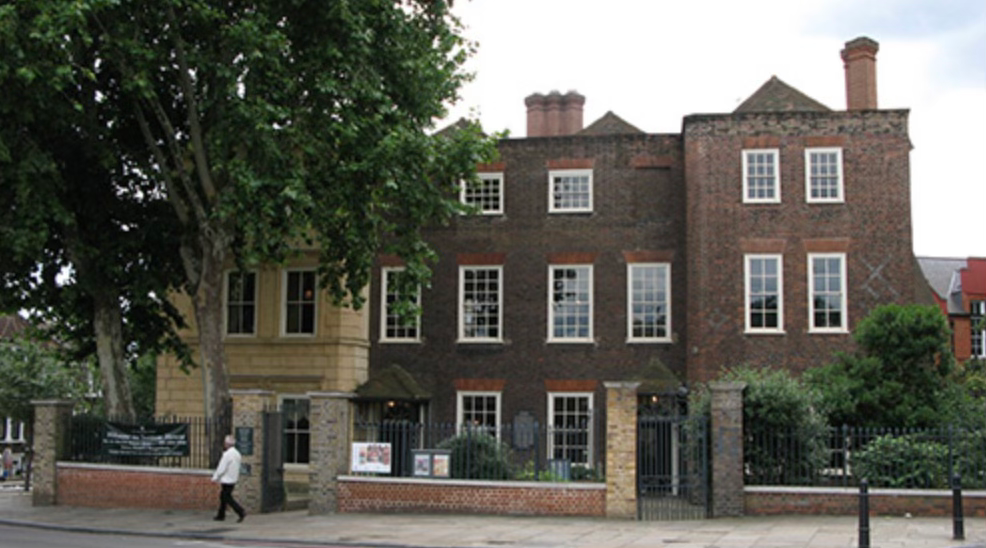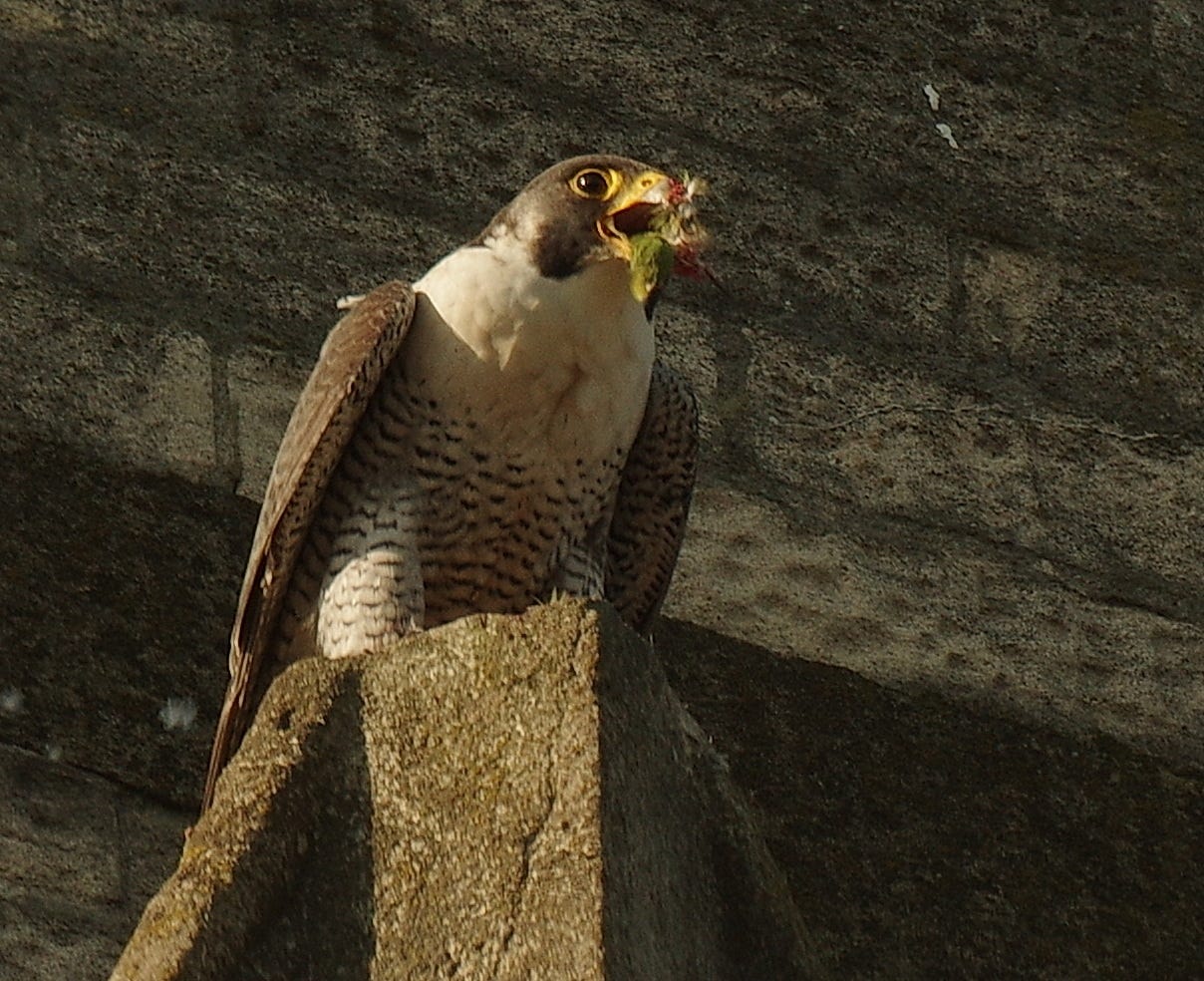Wolf Hall and the peregrines of London
And how these remarkable birds helped my mother in her decline
I remember picking up a copy of Hilary Mantel’s ‘Wolf Hall’ from my parents’ bookshelf a long time ago.
It took me straight inside the head of a tough youth living on the banks of the Thames 500 years ago. He was a scrapper who gave out as good as he got.
But I gave up after the first chapter.
I couldn’t see what all the fuss was about and I returned it to their shelves.
Ten years later I tried Wolf Hall again and was entranced.
Why was that?
What had changed in me?
In those intervening years I had certainly acquired a greater curiosity about the history of our Isles. And I was lucky not to have done the Tudors to death at school.
This time round the book transported me inside the head of this extraordinary man, Thomas Cromwell, who went from blacksmith’s son to sit at the king’s right hand.
I raced through ‘Wolf Hall’ then the other two parts of the trilogy, all 2,000+ pages of them in a matter of months.
A surprising jewel in the heart of Hackney
At the height of his pomp, Thomas Cromwell built up a substantial property portfolio across the country.
Some of it came from confiscation during the dissolution of the monasteries, a project that he led on Henry’s behalf. Some he had built for himself and his household.
His chief clerk Rafe Sadler was a Hackney man and so it was logical that Cromwell helped him to build a house there in 1535.
This summer I was surprised to learn that this fine Tudor house is still standing. It is called Sutton House.
Hilary Mantel visited in the 1990s and it was Sutton House that inspired her to write Wolf Hall. More particularly two bricks on display there.
One bore the imprint of a blade of grass, the other of a dog’s paw-print, stamped by the bricklayers that had laid them over 500 years ago.
They were the “flesh and blood” of the house for Mantel, cast in the year that “Thomas More was still alive and pearls were still warm on the neck of Anne Boleyn”.
I also found inspiration at Sutton House. Not so much in history like Hilary Mantel, but in nature.
In Sutton House’s Great Chamber my eye was caught by a full length portrait of Rafe Sadler himself1.
He is decked out in full finery including on his arm a bird that my newly re-wilded self recognised immediately as a peregrine falcon.
As a Tudor gentleman of standing, it would have been important that he was an adept at the art of falconry, the ‘sport of kings’.
Hackney was proper countryside in the 16th century. Rafe would have ridden out with friends into the nearby woods and sent their birds up to capture squirrels and rabbits.
But unfortunately peregrine falcons have not always been so revered throughout British history.
Rewilding’s urban success story
The combined forces of chemicals like DDT and persecution by gamekeepers on so-called ‘sporting estates’ succeeded in pretty well wiping them out in Britain 50 years ago.
They clung on in isolated parts of Wales and Scotland but they have come back in recent times, principally in an urban setting.
Now there are believed to be at least 40 pairs in London, attracted by all the new high rise towers that have gone up, a lot of them thanks to the decision of the Mayor of London 20 years ago to go all Manhattan with the skyline.
That’s probably why the city I call home now has the second-highest urban peregrine falcon population in the world, after New York.
The fact is that if you want to see a peregrine falcon in the UK, London is your best bet.
For example, the latest series opener of Jim and Nancy Moir’s (aka Vic Reeves of ‘Vic and Bob’ fame) ‘Painting Birds’ on Sky TV was set at Battersea Power Station, to showcase those birds of prey.
London happens to provide the food and the habitats that these birds co-evolved with.
Peregrine falcons shared their traditional craggy homes with rock doves, familiar to most of us as the feral pigeon.
You may not see much similarity between a cliff ledge and a block of penthouse flats but a peregrine falcon can. They just see a structure that balances shelter and access to a decent food supply.
I first saw peregrines at the Tate Modern but since then I have seen them all over the city.
One recently interrupted a late breakfast in the courtyard of St Pauls Cathedral where legend has it that they have bred since Tudor times. It had a breakfast of its own, probably a pigeon.
I have seen them feast near my home on Brockwell Park’s many parakeets at a nearby church they used as a plucking post.
They had the power to arrest my mother’s cognitive decline and the dark place she must have been in
Peregrine falcons also followed my mother around from hospital to hospital in the last months of her life.
The first time was at her local hospital in Ealing where their screeching calls echoed round the car park. That sound seemed to penetrate the fog of her Alzheimers to bring my mother back to a child-like wonder at these apex predators.
The next staging post was Charing Cross hospital which also has a nesting pair of the birds2. Her decline had accelerated by now but my mother seemed to perk up when I told her of my sightings walking through the cemetery at Barons Court en route to visiting her.
So you can perhaps see why peregrine falcons mean so much to me.
They had not only the power to arrest my mother’s cognitive decline and the dark place she must have been in, albeit temporarily. This beautiful predator also pops up in so many guises and in so many places across London, both medieval and modern.
Once a symbol of what was rare and remote in nature is now an increasingly common sight.
To me they are an emblem of the rewilding of London.
I have subsequently learned that historians believe the portrait is probably not of Rafe but of his grandson. But why let facts stand in the way of a good story, eh?
Both hospitals have webcams if you want to check the falcons out.






